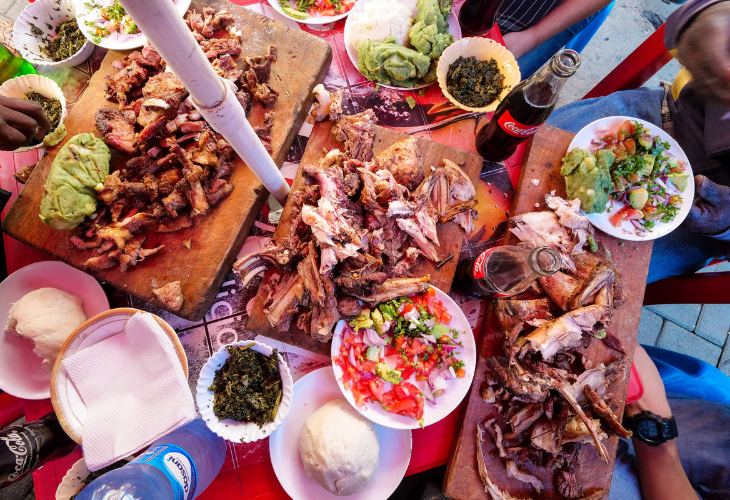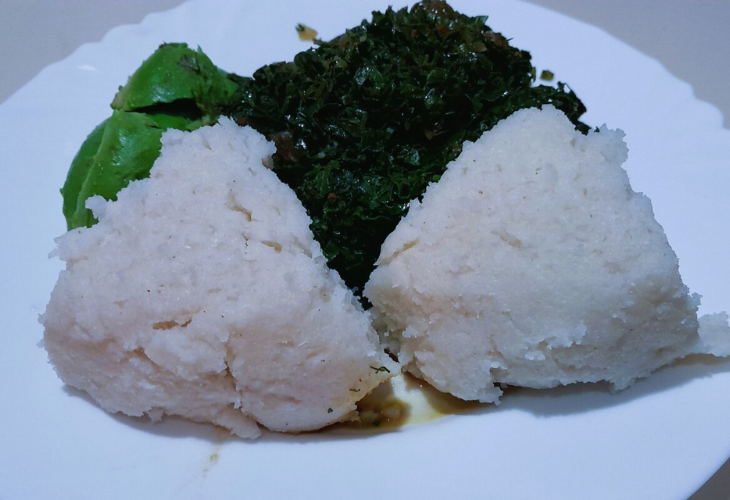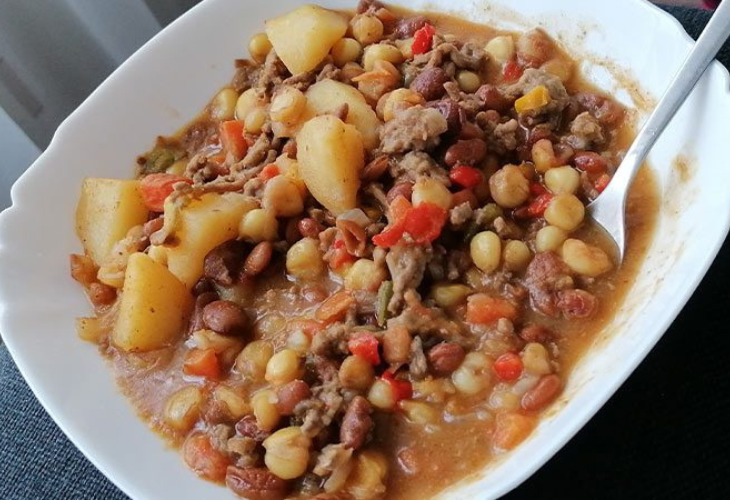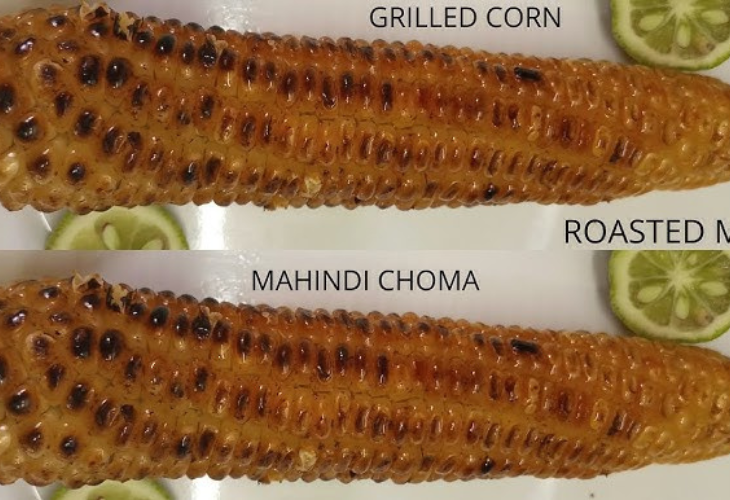
Explore the Flavors of Kenyan Food
Introduction
Are you curious to exploit Kenya’s culinary space? Well, Kenyan flavors are a true reflection of Kenya’s cultural diversity. Think of eye-catching grilled meat (nyama choma) lying on an open flame or the fragrance of roasted maize in the streets.
Touring the coastal region offers a taste of different cultural foods with Arabic and Indian influences. More importantly, coconut-infused dishes ring loudly over other delicacies.
Typically, the most popular dish within most Kenyan communities revolves around ugali, whose only ingredient is maize grains served with green vegetables such as collard greens and kwon as sukuma wiki. This staple food is deeply rooted in Kenya’s Indigenous communities.
While exploiting Kenyan culture, besides sustenance, food is also a celebration of community traditions. They offer unique food preparation art passed along to different generations. Better yet, Kenyan dishes sing a universal song that draws people together.
Join us on this culinary journey as we reveal unique dishes from different cultures and regions that are perfect for your taste.
We will uncover Kenya’s staple foods, festive dishes, and other street scene delicacies to help you appreciate the diversity. These valuable insights will usher you into the new realms of wanting to have a bite of every option on your way. Read on.

Ugali and sukuma-wiki dish
Overview of Kenyan Cuisine
a) Colonial Influence
When the colonialists took over Kenya,
they introduced various crops that later greatly influenced Kenyan delicacy. These settlers introduced coffee and tea, which overtook some of the popular traditional beverages. Additionally, the colonialists introduced bread and stew, which became part of the current Kenyan cuisine.
Similarly, the Indians who came to build the Kenyan railway line introduced their dishes, such as chapatti and samosa, together with spices such as turmeric, coriander, and cumin, which later influenced our cooking methods. These meals, which reflect our colonial history, are now our global identity.
b) Ethnic Diversity
Kenya enjoys cultural diversity from over forty communities, each contributing uniquely to the country’s culinary space. Some of these dishes reflect the region’s local ingredients and climate, and participants showcase their special preparation styles.
For example, when you visit the Lake Victoria region, you will meet the Luo communities, who prepare fish-based dishes. They prepare these dishes either by frying, smoking, or stewing. They also prepare a special delicacy known as Aliya, a protein-rich dish made from sun-dried meat.
The Kikuyu community, which dominates central Kenya, has a special dish called molimo. It is prepared by mashing peas, potatoes, and leafy greens. The whole dish can be served with roasted meat, whether on special occasions or during normal schedules.
Moreover, the Luhyas of western Kenya value chicken, popularly known as Ingokho in the local dialect. They serve this ethnic cuisine with ugali or chapati, which curves their unique identity.
c) Geographical Influence
Kenya has a special blend of culinary dishes that vary from the coastal region to the inland spaces. For instance, you will encounter a Swahili culture in the coastal region, which showcases seafood, spices and other ingredients.
The Swahili dishes borrowed most of its culinary arts from the Arabs, Persian and Indian merchants. They use coconut oil to enrich dishes like fish and rice. Furthermore, they prepare excellent dishes like pilau and biryani, with special ingredients from cloves and cinnamon.
Besides, Kenyan inland cuisine has unique dishes that are prepared traditionally or using modern menus. For example, you can prepare their flavour by boiling beans and maize. Then again, nyama choma is grilled meat from cattle, goats, or sheep served with ugali.
The difference between coastal delicacies and inland ones is that the coastal version relies on seafood and spices, while the inland ones depend on grain-based plants.
Staple Foods in Kenyan Cuisine
a) Ugali
It is a staple food in Kenya and a national identity, holding a central place in Kenyan cuisines. It is a unique meal prepared from maize flour and served with stew, meat, or green vegetables. However, you can make different versions of ugali using either sorghum or millet flour.
The process of preparing ugali is simple. Let the water boil, and add flour while stirring with a special stick to attain a dough-like consistency. Once cooked, it is put on a plate and served hot.
So, what is ugali’s significance? Many communities serve ugali to signify unity, hospitality, and friendship. Some Kenyan cultures believe a day will be incomplete without serving Ugali delicacy. More importantly, ugali offers carbohydrates to the communities, offering much-needed nutritional value to help them handle any hard labour.
b) Nyama Choma
Nyama Choma is a popular delicacy synonymous with Kenyan celebrations and local eateries. It is prepared from beef or goat meat; however, lamb and chicken options exist, too.

Nyama choma dish
Preparing this meal is not hard. You only need to cut pieces of meat and season them with salt before roasting them on a charcoal grill or open fire. Many people like the smoky flavor served with kachumbari, which consists of chopped onions and tomatoes. It can also be served with ugali.
c) Rice
When Indian and Arab merchants arrived on the Kenyan coast, they introduced rice, now a staple of Swahili cuisine both on the coast and inland. Furthermore, they brought spices to influence rice flavors.
The most popular rice flavors are biryani and pilau. First, you can prepare biryani by spicing it with certain ingredients to improve its taste, such as turmeric, yogurt, and marinated meat. Pilau is another favourite dish prepared by combining cooked chicken or beef with specific flavours like cinnamon and cumin.
Similarly, coconut rice is also another version popularly known as wali wa nazi. The preparation process involves using coconut milk to offer a creamy flavor.
d) Githeri
Githeri is a favorite dish from central Kenya among the Kikuyu community. However, many communities in Kenya now treasure it as one of their favorite meals. You can prepare this dish by boiling beans and maize. You can add spices, like avocado or green vegetables, to add flavor.

Githeri meal
Githeri offers protein and carbohydrates as part of its health benefits. The good news is that the entire dish is plant-based, making it a favorite for individuals who don’t consume animal-based products.
e) Sukuma Wiki
Collard greens are another name for sukuma wiki, which is derived from the Swahili dialect. This favorite meal can be served with ugali or matoke. Preparing it is a breeze, involving cutting onions and tomatoes to flavour it. It is also a highly nutritious meal, offering calcium, vitamins A and C, and iron.
Regional Cuisines of Kenya
a) Coastal Cuisine
The most prominent dishes from the coastal perspective come from the Swahili community, which showcases seafood flavors spiced up by other ingredients, including coconut.
Among these delicacies, you will enjoy samaki wa kupaka, prepared with coconut and other ingredients such as garlic and turmeric. Besides, there is via karat, consisting of deep-fried potatoes served with kachumbari sauce.
Additionally, mahamri is another popular Swahili cuisine that is prepared by frying bread and spicing it up with cardamom. The coastal region generally has vibrant flavors that leave you in awe as you explore different cultural practices in Kenya.
b) Western Kenya Cuisine
Luos and Luhyas play a central role in determining Western flavors shaped by farmland products and lake harvests. For instance, Luos’s favorite meal is fish, which can be prepared in stew or fried.
Luhyas, which reside around the lake, also offer fish flavors; however, the most popular dish is chicken served with ugali or matoke. The central meals among the luhyas revolve around grains, local vegetables, and chicken, which visitors can access from local eateries, festivals, and other gatherings.
c) Central Highlands
The central highlands offer various produce, leading to varying tastes within this region. The Kikuyu community depends on grains and root vegetables to prepare their delicacies.
The most available farm produce are peas, beans, corn, and potatoes, which they rely on to prepare different tastes, such as iris. Irio is a nutritious meal often prepared by mashing corn, potatoes, and peas. This process resembles mukimo; however, the only difference is that they flavor it with pumpkin leaves in the Kokomo case.
Moreover, matoke is another favorite dish in central Kenya, prepared by mashing bananas and spiced with onions and tomatoes.
d) Pastoralist cuisine
Most pastoralist communities reside in northern Kenya. Their favorite diets are dairy and meat, operating in semi-arid areas. These people include the Samburus, Turkanas, and Borana, who rear goats, cattle, and camels.
Nyinyiri is the staple food in this area, which comes from fried meat consumed as a snack. They also prepare a meat stew served with millet products. Fermented milk is another popular dish offering high nutritional value in proteins.
Street Foods
Kenya has a unique culture where one can prepare food on the street without being limited to other eateries such as hotels and resorts. These locally available food versions do not require much formula when preparing. Here are a few examples:
a) Mutura
Many refer to this meal as an African sausage whose main ingredients are minced meat, spices, and blood. The procedure involves stuffing these ingredients into animal intestines and grilling them to acquire a smoky flavor.
Mutura is a special meal served at gatherings, social places, and other festivals in Kenya. Many regard it as an appetizer, especially when attending certain celebrations, such as weddings.
One can make it a communal activity by assembling participants together, allowing storytelling activities as you prepare this dish, making it a symbol of unity and hospitality.
b) Mahindi Choma
While walking on Kenyan streets around evening hours, it becomes easy to spot different traders displaying mahindi choma on the roadside. This snack is a favorite meal for street users who buy it on errands.

Mahindi choma
The preparation of this dish comprises of roasting fresh maize seed on an open flame to offer it a smoky flavor sold to both rural and urban folks. You must grill this maize until it attains the crispy brown consistency.
Many consumers spice it up with certain flavors such as pepper, salt or lime to improve its taste. Generally, roasted maize offers a vibrant street food culture in Kenya.
c) Samosa
When Indian merchants accessed Kenya in the pre-colonial era, they introduced samosas, among their best delicacies. This Indian cuisine is now one of the most common street foods, making it a beloved snack in many towns and trading centers.
How do you prepare samosas? Begin by filling the pastry with minced meat, peas, and potatoes. Flavor it with spices such as turmeric or cumin for a distinctive taste.
Samosa is only an appetizer, served as a quick bite on the street or at gatherings. Many chefs now blend locally available ingredients, such as peas, with Indian cuisine to enhance their flavour.
d) Chapati
Indians played a significant role in influencing the Kenyan dish chapati. Interestingly, this dish is available on Kenyan streets. Chapati is a universal meal that can be served with beverages such as coffee or tea or any stew (beans or beef).
Besides, one can consume chapati at any time of the day, whether it is for breakfast, lunch, or dinner. Interestingly, this meal is popular in festivities such as Christmas and is prepared in large quantities now that it is part of the basic Kenyan food culture.
Beverages
Kenyan beverages mix traditional and exotic flavors, shaping our food culture. Some communities value their beverages due to their traditional or nutritional significance, as suggested in the following list:
a) Chai
Kenya is among the leading nations in the world in tea production, which proves that tea plays a key role in the local beverage space. Tea, also known as chai in the local Swahili language, is a simple beverage prepared by mixing it with milk and flavored with soya or ginger.
Tea is part of the country’s hospitality and is served at formal events and family gatherings. It is a symbol of socialism and connection, served to welcome visitors on short notice. The good news is that this dish is available in most eateries and homes to keep you hydrated.
Tea is a popular meal served with snacks or chapati, depending on your preference. Many regard it as a breakfast meal, but you can consume it at any time of the day.
b) Mursik
Mursik is a synonymous dish among the Kalenjin community. It is usually fermented milk, a beverage of some cultural importance within the Kalenjin tribe, prepared traditionally.
First, the process begins by boiling milk and allowing it to cool before pouring it into a treated guard featuring herbs from certain tree species. The role of this ash is to preserve the dish for a long period as it ferments.
Beyond that, music is a favorite meal served on occasions like circumcision, birth, or weddings. It also symbolises unity and is served with ugali as an honor to the guest. This nutritious dish has a high protein content needed to keep your body healthy.
As a guest, you may buy mursik in different eateries, especially in Kalenjin regions, because they have a perfect art of its production due to milk availability.
c) Coffee
Coffee is grown in the fertile Kenyan highlands around Kirinyaga, Mount Elgon, Embu, and Nyeri. Again, many farmers in these highlighted regions export coffee globally, which becomes their source of income.
Many towns in Kenya have coffee cafes and eateries that serve different coffee flavors to consumers locally. For instance, there is a unique coffee culture around the Kenya coast known as Kahawa tungu. It is prepared in the streets in the mornings or evenings in small cups accompanied by certain snacks like samosa.
d) Traditional Beverages
Different communities in Kenya have their unique traditional liquor summarized as change or busaa. Traditional brews are served on various occasions, such as the passage of rites, weddings, or communal gatherings.
The first traditional liquor on our list is busaa, whose preparation style is an art borrowed from generation to generation. Busaa is a drink that magnetizes people together; hence, it is a symbol of unity. Some communities still implement traditional protocols where each age group gathers around a single large pot, each member immersing a straw in the pot and partaking in it.
Chang’aa is the disstled verson of busaa making it more poetenet than busaa. The government of Kenya placed regulations on its productions due to health reasons.
Festive Food in Kenya
Kenya encounters different religious festivities such as Christmas, Ramadan, and Easter holidays, each attracting special food based on our eating culture. Let’s tackle each festival in full detail:
a) Christmas
Nyama choma takes center stage during the Christmas period. The art of sharing nyama choma symbolizes unity as different families gather to share this meal to exalt their religious beliefs. At this moment, the price of goats and beets often skyrockets as the demand for these valuable products is high.
On Christmas occasions, many gatherings present a goat or a bull, which they slaughter and serve in different tastes, whether grilled or boiled. If it is a nyama choma affair, every participant gets a piece of meat and places it on an open flame or grill to allow it to attain the desired level for consumption. When the aroma fills the air, it draws the real meaning of the celebrations.
One unique aspect of this feast is that it can last the whole day. It involves gathering extended families, some travelling from different locations to participate. During this occasion, several activities, such as storytelling, take place alongside eating to strengthen the bonds.
For the families that reside in the urban regions, Christmas is an opportunity to retreat to the rural homes and meet families and friends. It is a powerful event that reinforces family ties and reconnects to your religious beliefs.
b) Eid Celebrations
Muslims become active during this Eid celebration, which comes at the end of Ramadan since it involves sharing. Here, you will encounter unique blends and dishes that reflect Swahili culture. The most common dishes are pilau, halwa, and biryani.
Eid is a religious festival that places a demand on sharing, where families offer meals beyond their family connections. This charity work calls for the distribution of delicacies beyond religious limitations.
Sharing is an art that strengthens bonds. Children and older people traverse different neighborhoods to collect food items. This generous act of distribution and sharing of Swahili flavors also extends to the inland, where Muslims access different parts to promote a culture of sharing food in love.
c) Harvest Festivals
Different communities approach such a festival in a unique way to showcase their cultural diversity. Some people perform harvest festivals according to their religious principles, whether Christian or traditional. The purpose of such celebrations is to honor God for provision and care leading to harvesting.
Maize is the most prominent item that many communities celebrate its harvests as it is a cornerstone of different diets in Kenya. Millet and sorghum are other staple crops grown in western Kenya, and they attract harvest festivals.
The key role of celebrating these harvests is acknowledging that agriculture is the only option for food sustenance among the community. Furthermore, it is also a chance to pass knowledge about the importance of hard work to younger generations.
Besides, harvest festivals strengthen a community’s bonds as they draw various families together for a shared meal to complement their efforts in agriculture.
d) Weddings
Weddings are an opportunity to display your prowess in understanding eating habits among different cultures. Depending on your location, it is vital to serve the interests of all participants based on their culinary routines.
The most common dishes during weddings are pilau, chapati, and nyama choma, among others. Cultural traditional food plays a significant role, too, as it is a sign of hospitality and identity.
A wedding is a social currency consistently rated to indicate the family’s generosity by the food quality and quantity. We use food to honor guests and make the celebrations memorable.
Kenyan Desserts and Sweets
a) Mkate wa Sinia
It is a delicacy showcasing Swahili culture at the coast: a rice cake. Its ingredients include rice, sugar, coconut milk, and cardamom, and it is baked until it attains a golden brown top. It is served with tea.
Mkate wa Sinia is a popular dish during various celebrations, such as Eid, beyond family gatherings. Based on its ingredients, such as coconuts and other flavors, this meal is generally heavily borrowed from Arab and Indian cuisines.
b) Madafu
Kenyan coast has unique dishes based on the available resources madafu inclusive. It is a drink from young green coconuts served raw without altering its contents. Since the coastal region is hot, it becomes a source of refreshment as people get involved in quenching their thirst.
Beyond the juice, this coconut serves as a light dessert, allowing you to consume the coconut flesh. Beyond that, madafu offers health benefits to users. You can purchase it at the beach or from street vendors.
c) Kaimati
Kaimati serves as a popular meal used to break the fast during Ramadan. Beyond that, it is also a reliable delicacy during family gatherings and celebrations. Many users prefer it due to its simple process of preparation.
Generally, kaimata is a reflection of Swahili cuisine, whose ingredients are easy to get, such as sugar, wheat flour, and yeast. After rolling them in a simple round dough, deep fry them until they attain a golden brown state.
What makes them stand out? Well, the secret is evident in their affordability due to the simple ingredients involved.
In Conclusion
Kenya showcases unique cuisines that are gaining access to other major cities worldwide, defining our diversity and catching the attention of a wider global audience. The most popular delicacies available on the global scene are the nyama Thomas and samosa, which are available at some food hubs in cities like London or New York.
As if that is not enough, our eating culture is growing deep roots with the introduction of ugali on the global culinary stage. It is now easy to search the Kenyan cuisines globally and have a taste of what such menus entail.
What makes this menu attractive in the global arena is the blending of Arabic and Indian tastes, catching the attention of these Asian cultures and cuisines. Although some menus are easier to implement beyond borders, some of the purely traditionally oriented cuisines are only available locally.
Understanding our culinary habits is a step forward before planning to exploit Kenya as a tourist. Daylight Adventures recommends that you liaise with them to obtain the correct information concerning local menus, including the standard ones featuring your heritage.
Kenya is an interesting nation when it comes to available flavors that showcase our cultural diversity. Each region has a unique flavor that serves as an identity. For instance, Mahamri or biryani is a flavor popular with communities along the coastal region. In addition, there is a national acceptance cutting across different cultures, although it is a popular dish that originated in central Kenya.
Want to explore Kenya and taste our flavors? Book now with Daylight Adventures and experience exciting memories of this region




